Tribes Deepen Commitment to Protect Homelands From Oil Pipelines
The Keystone spill in South Dakota and approval for the Keystone XL in Nebraska have galvanized indigenous people and their allies.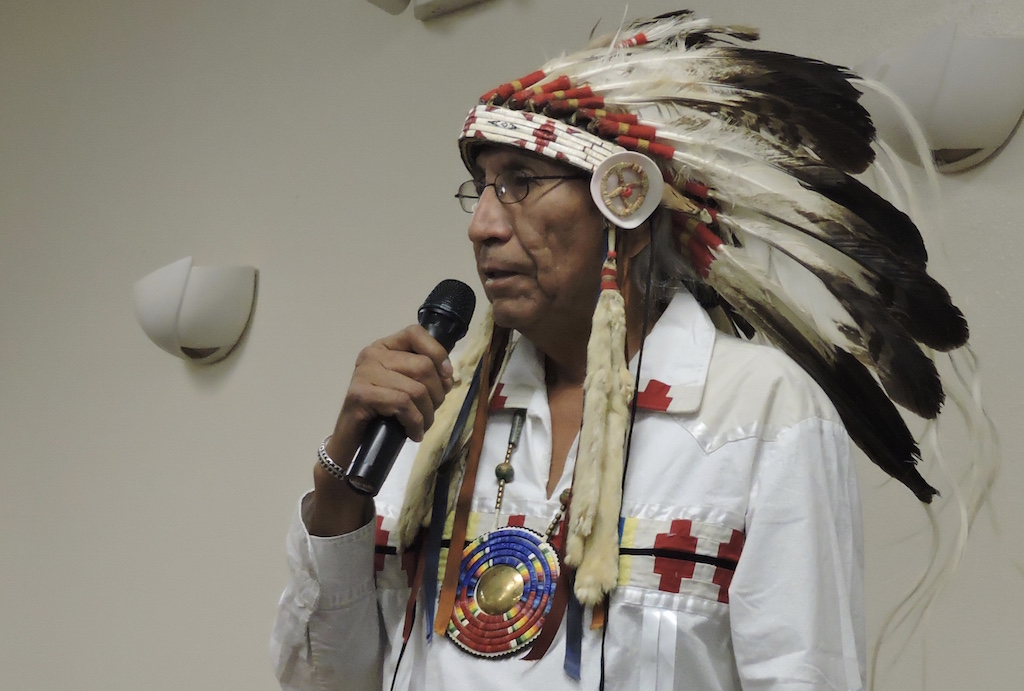 Lakota spiritual leader Arvol Looking Horse speaks at the gathering for the International Treaty to Protect the Sacred. (Sarah Sunshine Manning)
Lakota spiritual leader Arvol Looking Horse speaks at the gathering for the International Treaty to Protect the Sacred. (Sarah Sunshine Manning)
Just days after a major oil spill in northeast South Dakota by way of the TransCanada Keystone pipeline, Nebraska regulators came to a decision on the highly disputed Keystone XL (KXL) pipeline. The project was approved in a 3-2 decision. However, the approval is for an alternate route—far from a complete victory for TransCanada.
This pivotal decision in the KXL pipeline process creates new hurdles for TransCanada, including new permitting processes for the new route. It also has galvanized indigenous people and their allies in their commitment to “protect the sacred,” and specifically to protect their homelands from oil pipelines.
The same day of the KXL decision, representatives from tribal nations in the path of the pipeline and environmental organizations gathered on the Lower Brule Indian Reservation in South Dakota to sign the International Treaty to Protect the Sacred from Tar Sands Projects. Grass-roots organizers specifically planned the gathering for this important day. Their goals: to renew their commitment to protect the sacred, and to begin strategizing immediately after the KXL decision.
“We’re highly disappointed that the state of Nebraska has chosen to give a conditional permit for the KXL pipeline,” said Sisseton Wahpeton Tribal Chairman Dave Flute of the Lake Traverse Indian Reservation in South Dakota. “We’re disappointed in light of the leak that has just happened in our aboriginal homelands.”
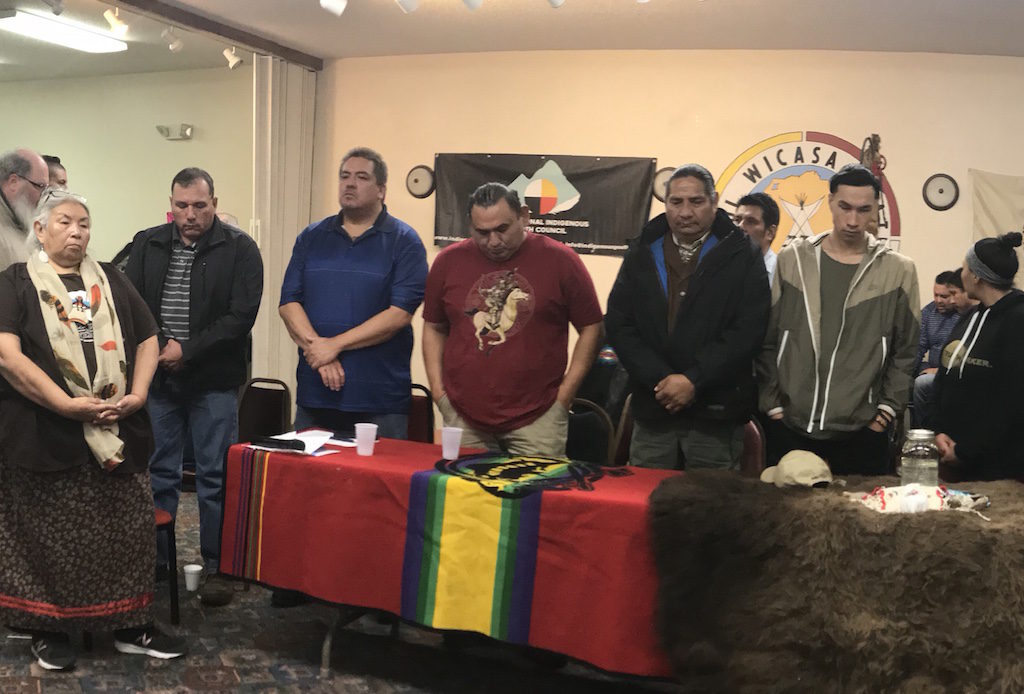
On Thursday, the Keystone pipeline leaked a reported 210,000 gallons of oil near Amherst, S.D., approximately 25 miles from the Lake Traverse Indian Reservation, although a Vice News report raised concerns that the amount of the spill could be as much as 600,000 gallons. Though the spill was not within the boundaries of the Lake Traverse reservation, it is within the traditional territory of the Sisseton Wahpeton Dakota and the greater Oceti Sakowin, the Seven Council Fires of the Great Sioux Nation composed of Lakota, Dakota and Nakota nations.
The Sisseton Wahpeton Dakota worry about the impact of the spill on their community. “They told me we’re outside of our jurisdiction,” Flute said. “But I let them know, too, that these are our Oceti Sakowin homelands. They promised that these pipelines were going to be made with state-of-the-art equipment and that any spills were going to be minimal, but hundreds of thousands of gallons are not minimal.”
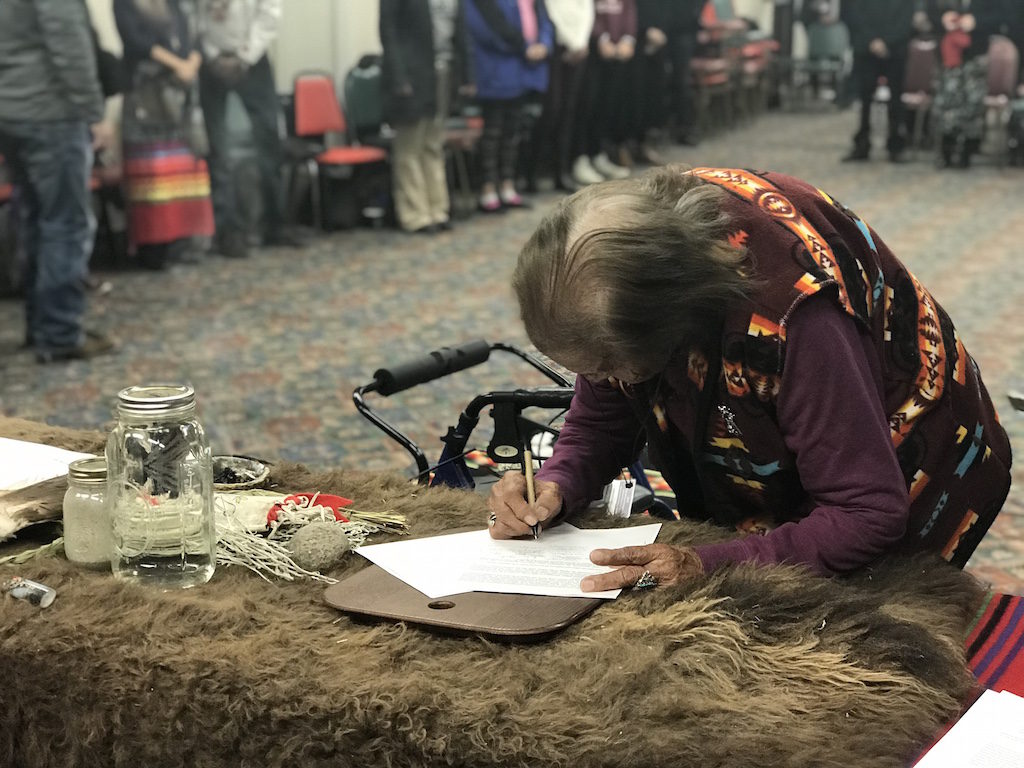
Along with the Sisseton Wahpeton Dakota, others gathered for the treaty signing included representatives from the Ponca Nation of Oklahoma, the Kul Wicasa Lakota of Lower Brule, the Hunkpati Dakota of Crow Creek, the Ihanktonwan Nakota of Yankton, the Oglala Lakota of Pine Ridge, the Sicangu Lakota of Rosebud, the International Indigenous Youth Council, the Braveheart Society, Thunder Valley Community Development Corp., the Indigenous Environmental Network, Dakota Rural Action, Greenpeace and 350.org.
“We are here today to redefine strategies and to be unified in doing that,” said Faith Spotted Eagle of Ihanktonwan Dakota territory. Spotted Eagle is a founder of the Braveheart Society, a grass-roots and traditional women’s society of the Oceti Sakowin. “We’ve been here before time and time again, but we just shake it off, and then go forward stronger, more determined.”
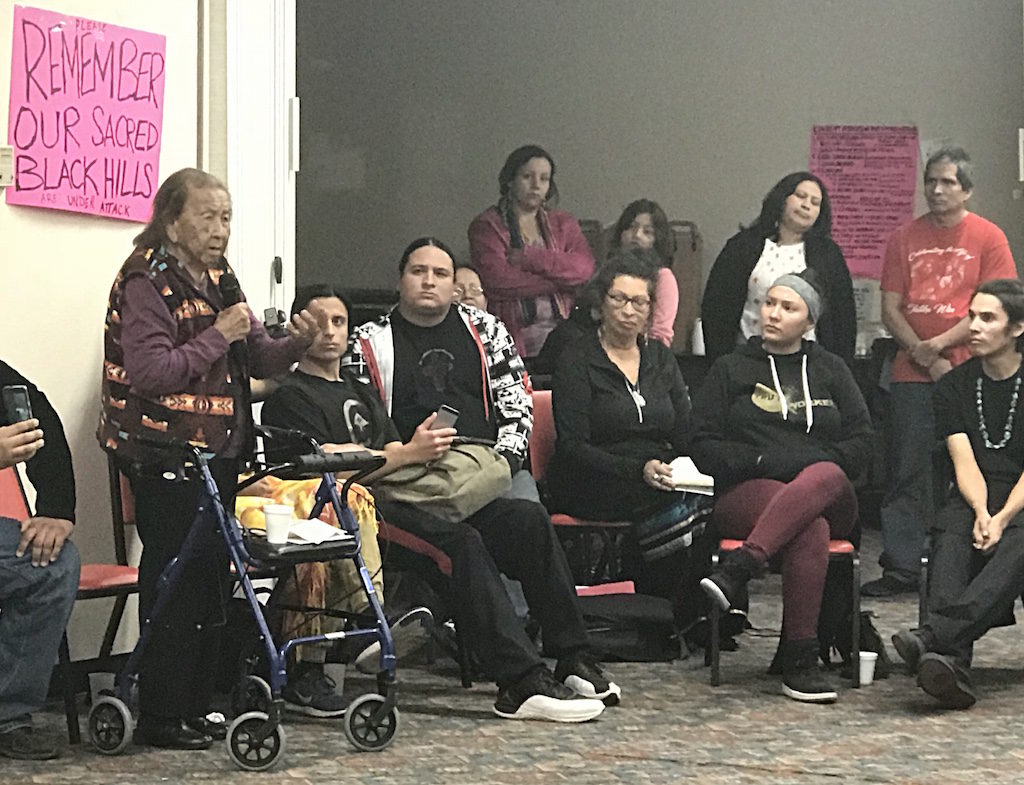
With the new alternate route for the KXL pipeline, many tribes are committing to renewed legal fights. With each new segment of the pipeline, new easements, new permits and new environmental impact statements will be required before the project can even begin. This could slow down the development of the pipeline for TransCanada.
“I’m happy to say that I’m a Lakota and I’m going to fight (the pipeline),” said Marie Randall, an elder from the Rosebud Sioux community and a resident of the Pine Ridge Indian Reservation. Randall was among the eldest in the room, and she addressed a group of allied protectors while standing with the aid of a walker. “I’m going to reaffirm my (traditional) boundaries and keep that black snake out.”

The “black snake” is a reference to a Lakota prophecy of a dangerous black snake cutting through Lakota homelands. To the Lakota, the black snake imagery points directly to the oil pipelines. It is this same prophecy, and the same love for Grandmother Earth—“Unci Maka” to the Lakota—that ignited the resistance against the Dakota Access pipeline in Standing Rock, N.D., last year.
For at least the last decade, tribal nations throughout North America and tribes in the path of numerous proposed pipelines have vehemently opposed oil infrastructure in their homelands. From the tar sands in Alberta, Canada, to Standing Rock, to the Enbridge pipelines cutting through the wild rice beds of the Ojibwe in Minnesota, tribal nations are committed to protecting their traditional territories and their communities.
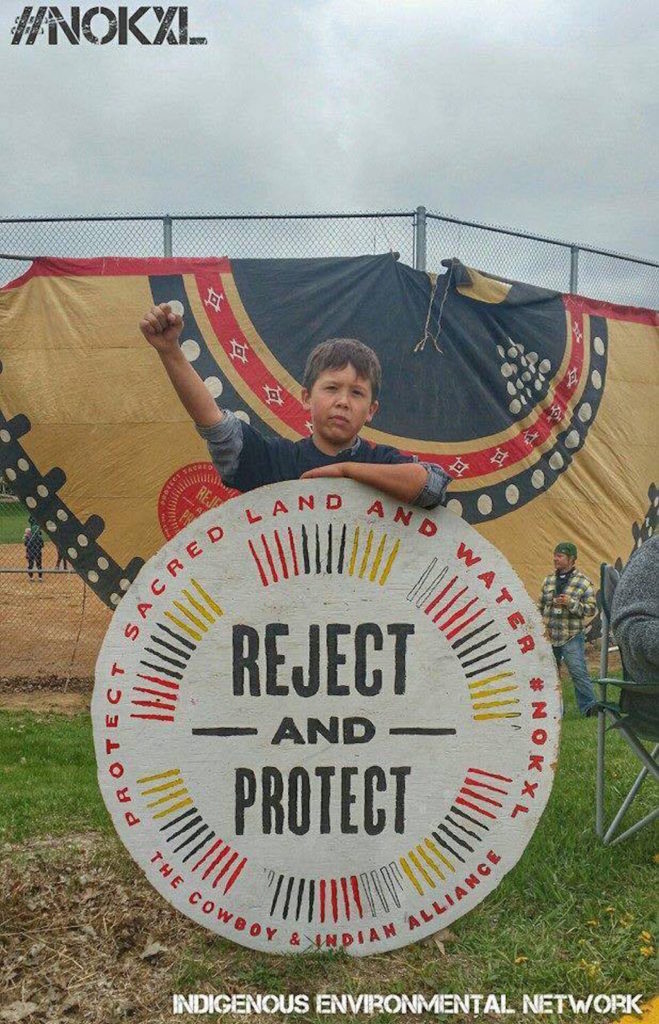
“Mother Earth is sick, and she has a fever,” said Arvol Looking Horse, Lakota spiritual leader and keeper of the white buffalo calf pipe, addressing the crowd at the treaty gathering. “This is very serious because (the oil pipelines) are affecting our first medicine—the water.”
Looking Horse, like many leaders and other people of the Oceti Sakowin, is committed to protecting the earth. “In our traditional ways, when you make a commitment, once you make that commitment, that’s your life,” he said.
Your support matters…Independent journalism is under threat and overshadowed by heavily funded mainstream media.
You can help level the playing field. Become a member.
Your tax-deductible contribution keeps us digging beneath the headlines to give you thought-provoking, investigative reporting and analysis that unearths what's really happening- without compromise.
Give today to support our courageous, independent journalists.


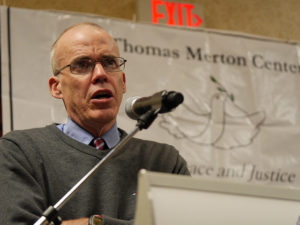



You need to be a supporter to comment.
There are currently no responses to this article.
Be the first to respond.